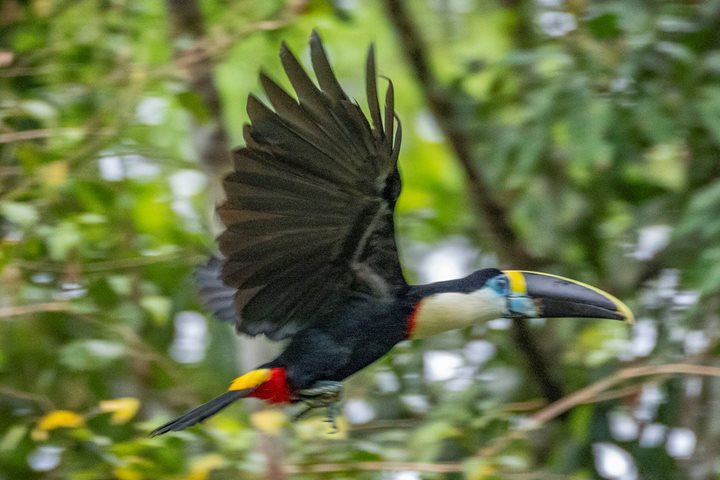Our second day in the Upper Amazon was a memorable one; the sounds and smells of the tropical rainforest filled the air during the early morning as we woke up with the Delfín II safely tied along the northern shore of the Pacaya-Samiria National Reserve on the Marañon River. After having breakfast, most of us visited the Amazonas Natural Park, which is a privately owned reserve, for a jungle hike. There, we also had the chance to explore the middle levels of the forest by means of an elevated boardwalk, suspended by cables from several of the tallest trees around. That gave us the opportunity to watch a seldom seen environment, where the breeze runs more freely and the sunshine is more prevalent than in the darker, very humid ground. We enjoyed watching a number of birds and insects, including the gorgeous morpho butterflies, and even a couple of green anacondas, the world’s largest snake! Some of us opted for a skiff ride instead, and explored Yanayaquillo Caño, a small tributary of the Marañon River, where we had a wonderful time watching a great variety of wildlife, from black and yellow-headed caracaras, to cocoi and capped herons and even a large troop of squirrel monkeys. Squirrel monkeys are very gregarious and are typically found in large groups that move together through the forest while looking for fruits, leaves, flowers, insects and bird’s eggs. They are incredibly agile and today we enjoyed watching many of them doing some suicide jumps between trees, all of them with happy endings.
During the afternoon we visited the small community of San Jorge, where approximately 350 people live. San Jorge is one of several towns around the Pacaya-Samiria reserve where the Peruvian non-for-profit organization Minga Peru has been working to educate and empower the local women by teaching them about a wide variety of topics, from reproductive health to business entrepreneurship. A group of local women welcomed us and told us their stories and how their lives and the lives of their families have been changing in a positive way. They also explained one of their communal projects, a fish farm, where they are raising the highly appreciated tambaqui, a local fish that feeds on seeds and fruits. We also did some shopping when they showed us some of the handicrafts they make and had a good time learning about the way of living in the Amazon. But the day was not over yet and after dinner we went back on shore in a different place for a nocturnal walk and to experience the thrill of listening to the myriad sounds of the largest tropical rainforest at night. What a wonderful way to end another beautiful day in the Peruvian Amazon!







